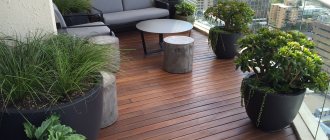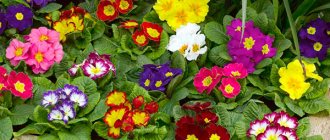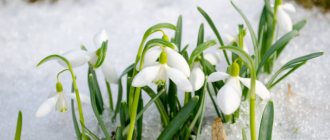Flowers for the bedroom can serve as an excellent addition and decoration, filling the atmosphere with unique warmth and comfort. Before choosing which plants to place in your room, it is important to know exactly how they affect human health and energy. Not every flower is suitable for placement in the bedroom and will have a beneficial effect. Let’s take a closer look at which flowers you can keep in the bedroom and which ones you should avoid.
What flowers can you keep in the bedroom?
It is known that not all plants are beneficial, and some can even cause harm. But indoor flowers for the bedroom should not only be beautiful, but also beneficial to health. It is important that the flower nearby helps and energizes you, and not depress you with its strong smell.
Indoor plants actually improve indoor air quality: they release oxygen and filter it from contaminants, and maintain humidity levels. The light, negatively charged air ions they produce combine with dust molecules, mold spores, and various bacteria, which truly makes the air fresher and cleaner.
Plants that help purify the air are a good choice.
When choosing which flowers are best to keep in the bedroom, you should take into account the degree of illumination of the room, its size and, of course, the interior. If the room is dark, preference should be given to shade-loving plants, and if there is a lot of light, sun-loving plants.
Which ones are not suitable for the bedroom?
However, not all representatives of the green family are suitable for the bedroom. These include plants of the night - those that are active at night and absorb oxygen, have a strong odor, which threatens allergies, neuroses and nausea, and those that, according to the teachings of Feng Shui , energetically not suitable for the bedroom:
- Orchid . It would seem, why can’t you keep such a delicate and beautiful flower in the bedroom? But, from the point of view of energy and essential oils, this plant is dangerous for sleep. Orchid is dangerous because it provokes insomnia, headaches, an aggressive and irritable state in the morning and depression and fatigue throughout the day.
- Lily . It is harmful due to its excessive absorption of oxygen and large release of carbon dioxide, hence morning headaches and feelings of depression and fatigue. Ferns can also be classified as the same type of sleeping pests.
- Jasmine . Just like lily, it absorbs a lot of oxygen, but in addition to this, its bright smell can cause allergic reactions, nausea and headaches.
- Dieffenbachia . The plant is rich in moisturizing properties, cleanses the air well of phytoncides, but is also very poisonous. Contact of juice on the skin causes severe irritation and itching. Even worse, if the plant gets on the mucous membrane, swelling of the tongue and blindness will be its consequences. These include tuberose, croton, Japanese rhodoea, and oleander.
- Hydrangea . The plant is beautiful, but is fraught with allergic reactions from the aroma and pollen of the plant.
- Monstera . It absorbs energy, thereby literally “suffocating” a person in his sleep, taking away large quantities of oxygen in the bedroom.
- Philodendron . Dangerous from poisoning and damage to the gastrointestinal tract.
- Azalea . A luxurious hat of thick colors is not suitable for the bedroom, as it can cause cramps and even colic and stomach spasms.
- Mimosa and Gesner tulip. They are dangerous for the hair, as they negatively affect the hair follicles, which can lead to hair loss and baldness.
Record holders for air purification
The air constantly contains harmful and sometimes toxic substances, such as compounds of benzene, formaldehyde, trichlorethylene, toluene and xylene. All of them stand out from the furnishings, carpets, plastic windows and wallpaper. Additionally, a person independently saturates the room with chemicals when cleaning using various cleaning products. Correctly and successfully selected plants will purify the air and eliminate all harmful compounds.
Indoor flowers from this list are considered record holders for cleaning:
- Ficus benjamina is a real record holder, neutralizes a lot of chemical compounds and attracts dust;
- Ivy (Hedera helix) – cleanses benzene and ammonia;
- Dracaena – neutralizes formaldehyde fumes;
- Schefflera – neutralizes nicotine and tars contained in tobacco smoke;
- Golden scindapsus (Epipremnum aureum or pothos) – neutralizes benzene.
Any of these plants has a beneficial effect on the atmosphere in the bedroom. You can also place several flowers on the windowsill at once: they get along well together and complement each other.
Flowers for decorating the bedroom and promoting health
In addition to such harmful plants, there are many flowers that not only look good in the bedroom, but also improve human health.
These include:
Chlorophytum leaves have interesting colors
- Chlorophytum. It is capable of moisturizing and well purifying the air from microorganisms, and neutralizing toxic substances such as formaldehyde. In just 24 hours, four mature plants help purify the air by 70-80% in a bedroom with an area of up to 10 square meters.
Spathiphyllum will make your sleep healthy
- Spathiphyllum. This plant removes harmful substances from the air that enter the room through the windows. The plant normalizes the mood and is suitable for almost any person; it is recommended to place it in the bedroom for a healthy and restful sleep.
Aloe has been famous for its healing properties since ancient times.
- Aloe. Capable of absorbing up to 90% of formaldehyde released by chipboard furniture, releasing oxygen at night and absorbing carbon dioxide.
Kalanchoe is also used in folk medicine
- Kalanchoe. Releases oxygen at night. Relieves depression.
Begonia is not only beautiful, but also useful
- Begonia. It is more useful to use the royal flower - a symbol of material well-being. In addition, it neutralizes harmful microorganisms, and its aroma relieves depression. It is especially recommended in the bedrooms of elderly people and in the presence of various diseases.
Geranium will save you from insomnia
- Geranium. It has the ability to kill microbes, ozonize the air, remove internal tension, and normalizes hormonal levels in women. It is especially useful to use for insomnia. But, in people prone to allergies, it can cause aggravation.
The popular name for Sansevieria is “mother-in-law’s tongue”
- Sansevieria, otherwise called mother-in-law or snake tongue, is most suitable for the bedroom. Sansevieria, unlike many flowers, produces oxygen at night. 6-8 plant leaves per person, waist-high, are enough to normalize the oxygen level in the bedroom.
Cacti come in different shapes and sizes
- Cactus. It is better to purchase it with long needles. It kills germs and reduces negative ionization of air, while protecting people from electromagnetic radiation. For normal development, it needs enough warmth and light.
Tip: The cactus is placed in rooms where there are computers and televisions.
Spices at hand
- Laurel. For a long time it was believed that the best remedy for insomnia in a child is a sprig of this plant at the head of the crib.
Usambara violet - an elegant flower
- Uzambara violet is not only beautiful but also useful.
Field bouquet
Wildflowers in the bedroom
A bouquet of wildflowers is often kept as a souvenir from a trip to nature. But not all of them are designed for this. Beautiful flowers and a pleasant aroma will not leave a woman indifferent.
Do not put in the bedroom:
- Lily of the valley.
- Dream-grass.
- Jasmine.
- Pansies.
- Immortelle.
- Lilac inflorescences.
- Poppy.
No less beautiful, and not having a detrimental effect on humans, can be called:
- Chamomile.
- Tea rose (rose hips).
- Violet (but not night violet).
- Tulip.
- Buttercups.
- Snowdrops.
- Scillas.
- Carnation.
Even if the impacts are sometimes not obvious, they still exist. Some people boast that they sleep well in the presence of lilies of the valley.
In fact, this can lead to serious health problems in the future, especially if such dangerous flowers have been in the bedroom for a long time.
Healing plants
Some indoor flowers not only perform the function of air purification, but with their scent they can successfully treat various diseases. After all, it is known that herbal medicine brings undeniable benefits to human health and has a beneficial effect on sleep. It is useful to keep plants in the bedroom, the descriptions of which are presented below:
- Geranium (Pelargonium) – with its scent it helps to overcome fatigue, insomnia, and treats neuroses well;
- Peppermint – calms with its subtle aroma, suppresses irritability and aggressiveness;
- Cyclamen – normalizes blood pressure, calms.
In addition to herbal medicine, some plants are used to make medicines that help with various diseases:
- Aloe arborescens (agagave) – its juice, useful for various inflammations, heals well;
- Kalanchoe viviparous - this plant treats burns, frostbite, cleans abscesses and heals open wounds;
- Usambara violet (Saintpaulia) is an excellent anti-inflammatory agent, used in cosmetics due to its tonic properties.
Such a “green pharmacy” will fit perfectly on the windowsill, and, if necessary, you will always have excellent medicine at hand. You can prepare decoctions or tinctures from medicinal plants and store them in the refrigerator, and use them on occasion.
Which indoor plants are best to avoid?
It was previously mentioned which flowers should not be placed in the bedroom. To fully understand this issue, it is worth considering several illustrative examples:
- Artificial flowers represent dead energy. This is an extremely negative element of home decoration. It is not surprising that many associate artificial flowers exclusively with cemetery decor;
- Dieffenbachia is a spectacular tropical resident, which many love for the original color of its leaves and unpretentiousness. A houseplant can even sanitize indoor air, but its poisonous sap makes it unsuitable for keeping in apartments where there are small children and pets;
- All types of lilies absorb too much oxygen at night. In addition, an excessively large amount of carbon dioxide released in combination with an obsessive intoxicating aroma leads to the development of headaches;
- Orchids are excluded from the bedroom for the same reason as lilies. Their aroma is too intrusive, and their oxygen consumption is too high. Moreover, the orchid is considered a bad plant for other locations. She is believed to exude negative energy and is also an energy vampire.
The list of which plants can be brought into the house and which ones can be admired outside the walls of the home can be continued indefinitely. The main rule is this: you must first study any flower you like, find out as much useful information about it as possible, and only then decorate your home with the “green novelty.”
Exotic flowers
Exotic lovers want to see something unusual and original in their bedroom. In this case, you need to turn your attention to plants such as homemade citrus, indoor banana, pomegranate or feijoa.
You can also place beautifully blooming homemade exotic flowers near the bed, which not only please the eye, but also smell delicious. For example, you can put Sprekelia, Lachenalia, Streptocarpus or blue Tillandsia on your bedside table.
There are a great variety of exotic plants, so choosing a flower to suit your taste will not be difficult. Plants that cannot be kept in the bedroom
Some indoor flowers should absolutely not be placed in the bedroom, since instead of the expected benefit they will cause harm. Some plants are capable of releasing substances that negatively affect humans, causing migraines, anxiety and even allergic reactions.
What should not be in the bedroom:
- Mimosa pudica - produces toxins that, with prolonged exposure to humans, lead to baldness;
- Adenium – also releases toxins and slowly poisons the body;
- Primrose - when flowering, it can cause dizziness and nausea;
- Trichocerius - you cannot sleep under the scent of its flowers, it provokes hallucinations and can even cause paralysis of the nervous system.
What plants should not be placed in a child’s bedroom and why:
- Euphorbiaceae and aroids - their juice is dangerous, since if it enters the body it causes severe poisoning. If a child comes into contact with these types of plants, they may get burns.
- Kurtaceae - leaves and flowers emit toxic substances, although they are often very beautiful plants.
- Nightshades - their fruits are very poisonous and, once ingested, can cause nausea and vomiting.
When placing a flower on the windowsill of a child's bedroom, you need to make sure that it does not belong to any of the above families and does not have a strong, pungent odor. Newborn children are especially vulnerable.
We create exoticism in the relaxation room
As you know, a person spends much more time in the bedroom than in other rooms. Therefore, when choosing plants, several factors should be taken into account:
- whether the flower actively produces oxygen;
- does it affect room humidity?
- whether they promote air filtration;
- do they cause allergic reactions?
If the flower meets these simple requirements, then it’s time to get down to business and turn your bedroom into an exotic place of bliss.
Lemon
You can fill your relaxation room with a delicate citrus aroma by growing a lemon tree in it. This is not only a pretty plant, but also a storehouse of vitamin C. With proper care, it produces exotic fruits that can be eaten.
The plant is watered 3 times every 7 days in winter, and twice a day in summer. The water is first settled in special containers, and only then used for spraying and watering. Its graceful leaves actively absorb carbon dioxide, releasing pure oxygen in return. Truly a wonderful plant for the bedroom!
It is advisable to grow lemon in one place where there is a lot of sunlight.
Aloe
According to biologists, this flower is capable of absorbing approximately 90% of toxic elements from the atmosphere that are emitted by chipboard products. If anyone is interested in the question: can aloe be kept in the bedroom, then you should think about this:
- the plant produces oxygen especially actively at night;
- releases phytoncides into the atmosphere that kill microscopic pests;
- is a remedy for many ailments.
And, of course, in the bedroom there is furniture made of chipboard, which emits formaldehyde. The answer is obvious - it’s even necessary.
Everyone knows that aloe leaves have beneficial properties. They are used to treat colitis, eye diseases, gastritis and women's ailments. Therefore, having such an “ambulance” at hand means being in control of the situation.
It is advisable to water aloe as the soil dries out, no more than 2 times a week. Also try to protect the flower from drafts.
Geranium
Some people know this flower as pelargonium. But no matter what it is called, this does not affect its ability to clean the room from germs. If you rub the leaf plate in your hands, it emits a specific smell. Therefore, many doubt whether it is possible to keep geranium in the bedroom without harmful consequences. In fact, the plant does not cause allergies. And the smell appears only under mechanical influence. Nevertheless, the flower actively secretes a substance that can infect harmful bacteria in the living room.
Hyacinth
Amazing spring flowers of various colors can give many unique emotions to fans of home gardening. Is it possible to keep hyacinth in the bedroom? When making a decision, it is worth considering several factors:
- is there enough light in the room;
- does the aroma of buds affect the general condition of household members relaxing in the bedroom;
- what feelings does a plant evoke at the moment of lush flowering?
There is an opinion that hyacinth has a beneficial effect on feelings between husband and wife. It encourages creativity and ennobles thoughts. Charges you with energy for the whole day and encourages you to do good deeds. Be that as it may, all this can be checked by planting such beauty in your abode of relaxation.
Flowers in the bedroom according to feng shui
According to Feng Shui philosophy, there should be no indoor plants in the bedroom. The Japanese believe that even a painting or photo wallpaper with their image carries negative energy. They explain this by saying that flowers absorb oxygen and release carbon dioxide at night, which means they have no place near a sleeping person. In addition, plants have their own energy, which mixes with human energy, which is unacceptable by Japanese standards.
However, there are some exceptions that allow flowers in the bedroom according to Feng Shui. First, you can install plants that produce oxygen even at night. Secondly, there should be a small number of them. Thirdly, no herbariums or artificial flowers, as their energy is considered unfavorable. Let's consider what flowers can be placed in the bedroom so that it does not contradict the rules of Feng Shui.
Ideal plants for the bedroom
According to Feng Shui, favorable flowers in the bedroom act as active objects that have a direct impact on the energy of the house itself, as well as on the energy status of each of the inhabitants of the house. In order for even correctly selected plants to exude the right good power, their condition must be monitored. Flowers suitable for the bedroom should be well-groomed and healthy.
Sick green friends can rot, turn yellow, and take on an irregular shape. These negative transformations have a significant impact on everything that surrounds them. Let's consider the main types, the most favorable and interesting, emphasizing the cozy design of the bedroom, as well as improving the well-being of each of the apartment residents.
Aloe
Aloe is a houseplant that is especially valued as a healing component for the treatment of many ailments. A pot with a real “healer” can be placed in the bedroom or children’s room. It will contribute to a good microclimate.
It is known that aloe can absorb up to 90% of formaldehyde. Poor quality chipboard products can release these toxic substances into the air, which are extremely dangerous to human health. The unique plant not only absorbs dangerous toxic substances, but also significantly reduces the level of carbon dioxide in the air, and actively synthesizes oxygen during the daytime. If such a flower is installed on the window sill of a room, there will always be especially clean and pleasant air.
It must be remembered that aloe is a very “modest” plant. It does not like excessive attention to itself. The task of home owners is to place pots of aloe so that they are not in sight of everyone. In principle, the secluded atmosphere of the boudoir will protect delicate “green friends” from excessive excitement. It is believed that by placing aloe in the bedroom or children's room, you can protect the inhabitants of the house from accidents and remove negative electricity from the air.
Usambara violet
Indoor plants for the bedroom can be not only healing, but also very beautiful. The Uzambara violet deserves special attention. Such a spectacular plant will highlight the design of the bedroom, but will not introduce dissonance into the calm or relaxing atmosphere of the boudoir.
It is believed that a beautiful flower can influence the psycho-emotional state of people. It is curious that these flowers for the bedroom, depending on the color, can have different effects on the consciousness or well-being of the inhabitants of the house:
- White flowers are able to regulate strong feelings, passions subside, psycho-emotional intensity is reduced to a minimum. By placing a violet above the bed in the bedroom, a person can protect himself from nervous breakdowns and reduce the level of excitement, which brings significant discomfort;
- Purple inflorescences contribute to the formation of spiritual unity in the family. Violet will help neutralize the largest flows of negative energy.
Red or pink flowers are suitable for people who lack joy. Purple indoor flowers for the bedroom will help to reveal a person’s special talent - to enjoy communicating with people, to get a feeling of satisfaction from the work done.
Spathiphyllum
Spathiphyllum are the best indoor plants for bedrooms in those locations that are located in industrial areas. Harmful substances can enter the apartment through opening a window or vent. Green friend neutralizes acetone, ammonia, benzene, xylene. It is believed that spathiphyllum is capable of giving a person a calm and long sleep.
Shade-loving and unpretentious plants are excellent producers of oxygen at any time of the day. The plant can even humidify the air, which allows you to rest better. It is recommended to place 2-3 spathiphyllums in the bedroom. By the way, the “peace lily” is considered a traditional female flower that brings happiness to girls.
Chlorophytum
Chlorophytum or “spider” is valued for its unpretentiousness, beautiful aesthetic appearance, and appropriateness in any interior. The indoor flower copes well with harmful chemical compounds and nitrogen oxides. The level of radiation from electromagnetic devices is reduced. Just 4 indoor flowers can clear an area of 10-15 square meters.
The air is humidified, sanitized, and becomes fresher. Some experts recommend adding activated carbon to flower pots. This simple technique will increase the positive effects of chlorophytum several times.
Geranium
Flowers in the bedroom interior play a secondary role, but spectacular blooms always delight and attract the eye. Pots of geraniums are suitable for any room. This bright, beautiful flower is able to neutralize staphylococci and streptococci. The phytoncides that the plant produces help a person calm down, quickly cope with the negative consequences of stress, and overcome insomnia.
Geranium is very beneficial for women. The flower has a special effect on hormonal levels. However, no matter what type of geranium the home owners choose, it is important to remember that beautiful flowering can cause the development of allergies.
Pelargonium is a generator of negative ions that improve human health. It is believed that geranium effectively eliminates headaches, normalizes blood pressure, and strengthens the immune system.
Laurel
When considering the question of which indoor flowers can be placed directly next to the bed, it is worth paying attention to the so-called “classic” plants for the home. House laurel is considered one of the best types of home “green friends”, helping to normalize sleep.
Since ancient times, laurel branches have been placed at the head of children's cribs so that the child can sleep soundly and peacefully. The plant purifies the air, has a beneficial effect on the human nervous system, eliminates migraines and cephalalgia, and improves brain activity.
Chlorophytum
A very unpretentious perennial herbaceous houseplant that thrives in both shade and sun. In the light, the color of its leaves becomes brighter. Purifies the air from harmful impurities such as formaldehyde and carbon monoxide.
Spathiphyllum
A shade-loving indoor flower, very easy to care for, perfectly filters the air. It is popularly called “women’s happiness.” There is a sign that it will bring luck to single women in their personal lives, and to married women – harmony in relationships with their husbands. In addition, if you can’t have a child, this flower should definitely stand by the bed - it is believed that it can give its owner the joy of motherhood.
Sleeping next to a fern? Divorce!
Candidate of Agricultural Sciences, a famous writer and TV presenter, who is called the main gardener of Russia, Oktyabrina Alekseevna Ganichkina, claims that one of the most beautiful flowers - orchids - cannot be placed in the bedroom, because they can contribute to the appearance of insomnia precisely because of their bright colors and insufficient "percentage" of soothing green color. The fern, as O. A. Ganichkina enlightens, releases a lot of carbon dioxide at night, taking at the same time a huge amount of oxygen. And you can’t even touch it with your hands; it’s better not to touch the plant. Fern contributes to the appearance of headaches and a depressed state of a person. Oktyabrina Alekseevna even claims that “if a husband and wife are sleeping, then [they] may even run away because of this fern.” Azalea can bloom from November to June and it produces phytoncides that adversely affect the central nervous system. Azalea in the bedroom, confirms Ganichkina, can also cause family conflicts, because this flower makes spouses angry, irritable, and intolerant of each other. White azalea, according to Oktyabrina Alekseevna, can become a real reason for divorce. Red azalea - “the husband will run away to another.”
Aloe
It is a light-loving plant, so it should be placed in a room on the sunny side of the house, but it does not like direct exposure to rays. It is recommended to place it in the south, southwest or southeast side of the room, but it will feel uncomfortable on windows facing north. Not only is aloe juice healing, its energy has a beneficial effect on the human biofield. That is why it is often placed in the room of a seriously ill patient.
Kalanchoe
A flower with thick, fleshy leaves that does not require special care. This is a good solution for those who have a love for exotic indoor plants: they have an interesting leaf shape and very beautiful flowering. Kalanchoe blooms once a year, but very abundantly and colorfully. In addition, it belongs to the category of healing indoor flowers, and therefore it definitely won’t hurt to purchase it.
Kalanchoe is not just a healing plant, it can serve as a bright accent to attract attention
Beware of poison!
If there is an animal in the house, special care must be taken
This group of indoor flowers belongs to the category of poisonous. Therefore, if you have small children and animals, the flowers listed below should absolutely not be planted. If handled carelessly, you can get poisoned and damage the skin and mucous membranes.
For those who love these plants, do not forget that caring for them must be carried out in compliance with safety measures, i.e. Always wear gloves on your hands, and wash your working tools well after work. And you especially shouldn’t use knives that are intended for cooking in the kitchen for trimming.
Dieffenbachia
Dieffenbachia
Dieffenbachia The attractiveness of the flower lies in the huge leaves (length up to 50 cm). They have an oval shape and a pattern on the surface. These are light yellow-green large and small spots and stripes. The trunk is thick and compacted.
Belongs to a perennial species. Homeland - South America.
Thanks to Dieffenbachia, the air in the space is well purified, but it is not advisable to keep it nearby. Its juice, released when its integrity is broken, can cause poisoning. It is preferable to place Dieffenbachia in industries or on hard-to-reach surfaces.
When performing any activities, hand and respiratory protection measures must be observed.
Ingestion of even a small part of Dieffenbachia causes severe disruption of the functions of organs and body systems. Contact with the mucous membrane of the eye can cause problems with visual perception, and with the skin - tissue damage.
Oleander
Oleander
Oleander The plant is especially popular due to its bright crimson flowers. Refers to particularly poisonous representatives. Absolutely all parts of the flower (trunk, foliage, flowers, roots) are poisonous.
The aroma that is fragrant during the flowering period causes dizziness, and general health worsens. Even from collected nectar, insects can develop a painful condition, which is provoked by poison. In humans, if used accidentally, it can cause vision problems.
Inhaling the essential oil of the plant is dangerous. It is used to produce toxic substances that are used to poison rats.
When handling any plant, it is recommended to protect your hands with gloves.
Spurge
Spurge
Euphorbia The birthplace of the flower is Madagascar. It can reach a height of up to 1.5 m. There are a large number of species and a variety of shapes, for this reason an unambiguous description is impossible.
There is a clear similarity with cacti due to the spines present. It can be unsafe to prick yourself on them. The sap found in the trunk and foliage is white (hence its name). When it gets on the outer skin, it causes damage and is dangerous for the eyes due to loss of vision for some time.
Ingestion is fraught with poisoning. This can manifest itself in the form of involuntary muscle contractions, nervous tics, dizziness, and loss of consciousness.
The following difficulties may also arise:
- with pressure
- cardiopalmus
- feeling of shortness of breath, difficulty breathing
- nausea and vomiting
- swelling of the tongue, hands, feet
Croton
Croton
Croton Appearance is a miniature tree. The leaves on it have a smooth and hard surface, with a shine, with thin stripes contrasting with a distinct outline. Their shape is oblong.
The color varies: from lemon, orange to dark brown. The inflorescences have an inconspicuous appearance, but are rare in closed conditions.
The juice of this representative is very dangerous for the skin, because... will cause tissue damage. If accidentally swallowed, it causes nausea, vomiting, diarrhea, and abdominal pain. Sometimes it leads to difficulties in working with the heart.
Penetration of juice into the circulatory system leads to death if the skin is damaged.
Azalea
Azalea
Azalea A very popular flower among gardeners.
Azalea blooms richly and beautifully. It has a wide variety of shades: white, pink, red, yellow. The foliage is smooth and shiny.
Azalea Simsa (Indian Azalea) is a menacing representative. Its leaf blades and nectar contain dangerous toxins. They cause pain in the abdomen and cramps.
Mimosa bashful
Mimosa bashful
Mimosa pudica Arouses interest for its quaint, unusual appearance. Mimosa foliage is small, fragile, trembling. If it comes into contact with something, it immediately curls into a tube. The flowers are also small and round. Their color is soft purple.
The flower outwardly seems to be a defenseless creature, but in reality it is dangerous. It releases substances into the air that cause harm. Poisoning the human body, they can lead to partial and sometimes complete hair loss.
Ivy evergreen
Ivy evergreen
Evergreen ivy is very common in residential areas. This is a climbing plant, with thin shoots in the form of vines falling from window sills or shelves. The foliage is shiny bright green. Sometimes there are veins on it.
The danger for ivy is its fruits and foliage. They are poisonous. When taken internally, diarrhea and vomiting begin. With more severe poisoning, it causes hallucinations, loss of consciousness, and in critical situations, respiratory arrest.
Ivy is of particular interest to cats. They are attracted to bright leaves and want to taste them. Such food is fraught with severe poisoning and death of the pet.
Adenium
Adenium
Adenium is a small beautiful tree whose trunk is thick and knotty. Foliage is sparse. Her color is green. The number of inflorescences located on the crown is large. Their color is pink. Size – medium.
Adenium is easy to care for. Basically it develops on its own. But you should treat it with caution, because... the plant is toxic. The sap of leaves and inflorescences is particularly dangerous. Upon contact with the body, poisoning is caused, in which the general condition worsens, nausea and dizziness begin. Redness and a burning sensation may appear on the skin.
Monstera
Monstera
Monstera This representative can grow to enormous sizes. The leaves are large, smooth, carved.
Monstera is a beautiful decoration for any interior. It is advisable that this be an office space, because... The size of the small Montere apartment is cramped.
The juice that is released from the leaves causes burns and irritation upon contact with the skin. If it gets into the eyes, vision is temporarily impaired, and inside the body it provokes digestive disorders.
Philodendron
Philodendron
Philodendron is a bush that consists of branches in the form of vines. The leaves are bright and smooth. Their shape resembles elongated hearts.
The poison is in the sap of the plant. Its contact with the skin and mucous membrane of the eyes leads to irritation and burns.
Primrose
Primrose
Primrose A favorite flower among plant growers. It is small in size, has velvety green leaves with raised veins and beautiful blooms with a variety of shades. The plant is unpretentious and easy to care for.
When primrose blooms, toxic substances are released, so inhaling its aroma is not recommended. Its smell may cause nausea and dizziness. Villi on the leaves upon contact provoke a burning sensation and an allergic reaction on the skin.
Stellera dwarf
Stellera dwarf
Stellera dwarf Medicinal plant. Independent use as directed is possible only under the strict supervision of a doctor.
Stellera has a tall trunk with bright white inflorescences located on it. Its aroma is strong. It can be felt from a distance. The leaves of the plant are small.
Drinking pure flower juice leads to swelling of the vocal cords and numbness. The roots also pose a health hazard. They contain toxic organic acids.
Nightshade
Nightshade
Nightshade is an evergreen small bush that is decorated with many bright orange berries. They look very appetizing and attract a lot of attention. You can't eat them!
The fruits and foliage of nightshade contain poison. Using them will have unpleasant consequences. Therefore, if there are small children in the house, it is very dangerous to have one.
Gesner Tulip
Gesner Tulip
Gesner Tulip An incredibly beautiful and delicate flower with a variety of flowering colors: from yellow to red. It is a medicinal plant. It is used to make medicines in folk medicine.
If you stay in a closed space with a tulip for a long time, this can lead to partial or complete hair loss.
Trichocereus
Trichocereus
Trichocereus A cactus often found on windowsills. It has an oval-shaped body with large and long needles located on it. The inflorescences are large and white. They have a pungent odor.
The smell releases hallucinogens and alkaloids, which can lead to paralysis and damage to the nervous system . In the natural environment, the plant needs all this to protect itself from wild animals.
Alocasia
Alocasia
Alocasia Poisonous decorative foliage representative. Poison (hydrocyanic acid, mercury, mercuric chloride) is contained in all parts of the plant, even the roots. On the advice of experienced flower growers, it is not recommended to replant a flower without taking precautions.
If the root system is damaged, a strong smell of cyanide is felt. It is dangerous for them to breathe. The juice, when it gets on the mucous membranes of the eyes, leads to vision problems, and when taken orally (even a small drop) it causes long-term illness.
Cyclamen
Cyclamen
Cyclamen Another favorite plant among gardeners. The shape of the flowers is unusual. Also has attractive leaves. They are toxic. But tubers pose a greater danger. They contain strong toxic substances (similar in strength to curare poison).
The poison, once in the body, leads to the following symptoms:
- deterioration of general condition
- vomit
- diarrhea
- convulsions
- loss of consciousness
Browallia
Browallia
Browallia Its other name is Browallia the Beautiful. She received it for her incredible attractiveness. It is a small bush with inflorescences of different shades: blue, lilac, white.
Browallia is completely poisonous. Direct contact with the skin and mucous membranes is excluded. It causes a lot of attention to pets and therefore poses a great danger to them.
Aglaonema
Aglaonema
Aglaonema Amazes the eye with its beautiful large leaves. They are dense in structure, and on their surface there are various and incredible patterns. It is a poisonous plant, although it has a positive effect on the air in the room (purification, disinfection).
The main threat is the juice , but the fruits also contain toxic substances. For any work and when caring for a flower, precautions (hand protection) are required.
Gloriosa
Gloriosa
Gloriosa The most toxic and luxurious plant among all exotic ones. All its parts contain toxic substances. Attractive for its unusual flowering, which can change color.
It poses a great danger to children and pets, so it is better not to keep it in the house. Penetrating into the body, it causes severe poisoning, which can lead to kidney failure.
Spathiphyllum
Spathiphyllum
Spathiphyllum Also a common plant in residential areas. It is remarkable for its unusual flowers, which are shaped like a sail.
You need to be careful with harmful juice. It can cause burns and chronic ulcers on the skin.
Poinsettia
Poinsettia
Poinsettia has another name - Star of Bethlehem. It is a favorite plant for its brightness and expressiveness. It is also used to create ceremonial decorations indoors.
It is dangerous for humans due to its poisonous juice. When taken orally, it causes severe burns to the esophagus. It is also dangerous for people with allergic reactions to latex.
Clivia
Clivia
Clivia A very beautiful decorative flower, but poisonous. It is distinguished by bright orange inflorescences and is often used in design. Not recommended for keeping in homes where there are children and animals. Or at least it needs to be placed in a place where there is no easy access to it. If ingested, it causes digestive problems.
Pachypodium Lamera
Pachypodium Lamera
Pachypodium Lamera Popularly called the Madagascar palm. It is a representative of the African flora. P is a lush plant. It has a thick, fleshy, prickly stem, at the top of which are green leaves in the shape of a mohawk.
Deceit lurks in the juice of the stem. It contains poison. Particularly dangerous for allergy sufferers. The toxins and alkaloids contained can lead to vision problems upon contact with the mucous membranes of the eyes. If it enters the bloodstream, it causes cardiac arrest.
Begonia
Begonia
Begonia Ever-blooming varieties and their hybrids contain poison. Often they are chosen for growing indoors. These unsafe species are characterized by a fleshy trunk. Its length is about 40 cm. Blooming begonia retains its splendor for a long time, which is why it is attractive. Its inflorescences are small and collected in tassels.
If part of the plant accidentally enters the body, it can lead to nausea, vomiting, and poisoning. For this reason, the plant should be kept away from small children and animals.
Begonia
This perennial, profusely flowering plant will decorate any room. The flower loves light and constancy, so once placed on the windowsill, try not to move the pot. Begonia can be evergreen, deciduous, decorative-deciduous, decorative-flowering, annual or perennial. There are more than a thousand species in total.
Sansevieria or Mother-in-Law's Tongue
It is a fairly light-loving plant with a powerful root system, so it is better to choose a clay pot (a plastic one will simply burst under the pressure of the roots). If it stands in the shade, the leaves will turn pale and Sanseviria will stop growing. The flowers exude a pleasant, sweetish aroma.
What’s interesting is that you can achieve flowering faster if you grow the flower in a cramped pot.
Jasmine
Indoor jasmine is considered the national flower of Pakistan and belongs to the medicinal plant species. It is best to place it in the eastern and southeastern parts of the room in the summer, and in winter move it to windows facing north.
Tip: decorative jasmine loves regular spraying, abundant watering and protection from direct sunlight.
Hibiscus
Ideal for beginner gardeners, as it easily adapts to living conditions. In common parlance it is called “Chinese rose”. This is a light-loving plant that grows profusely. It doesn’t like being cramped, so it will feel best on a table by the window.
The photo shows the best location
Cyclamen
Loves light, but does not tolerate direct sunlight. It blooms profusely, brightly and beautifully, loves humidity, so it is better not to place it above radiators. He needs fresh air, it is advisable to ventilate the room regularly. Tolerates low temperatures well.
Cyclamen in a pot
The choice of plant for the bedroom should be approached very responsibly, because this is the place where a person spends most of his leisure time, in fact, a third of his life. Therefore, you should not place the first flowers you like in the room; you must first study their properties and effects on the body.
Folk signs: what is possible, what is not?
To trust folk signs or not is a personal matter for everyone. It is worth remembering that most often signs arise on the basis of many years of observations of ancestors. Let's consider what the appearance of some indoor plants in the house entails:
Cacti are an unfavorable plant for the home. It is believed that the presence of a cactus in an apartment turns a husband into an alcoholic. There is a second sign that says that in a house where there is a cactus, a girl will not get married successfully or will not meet her chosen one at all. The cactus also has a bad effect on relationships between family members.- Ferns take away vitality from a person, being an energy vampire. In a house with a fern, a person will feel constantly tired, inactive, and sleepy.
- Ivy and climbing plants, according to popular belief, scare away men. In a house where there are such plants, a man will constantly strive to go somewhere. In addition, ivy negatively affects the state of mind, depriving a person of optimism and balance. It is best to keep such plants outside the house. So, ivy will act as a protector.
- Dieffenbachia is dangerous for its poisonous properties, and also takes away the health of household members.
Mother-in-law's tongue is a plant that has practically no stem, with elongated longitudinal leaves with a bright green color. It is believed that the presence of such a flower in the house leads to loneliness and the inability of a girl to get married. The plant negatively affects female power, so it is dangerous to keep it in the bedroom. The flower seems to “drive” men out of the house.- Sansevieria is a curious plant that looks like the tail of a fish. For this reason, it is also nicknamed “pike tail”. The leaves of the flower, painted green, have such a bizarre shape. The plant blooms and has a pleasant aroma. But, according to signs, it negatively affects family and personal life. The presence of this flower in the house leads to loneliness.
- Palm trees often decorate the interiors of many rooms, but it is better not to place such a flower in your home. The palm tree contributes to grief in the family if it was given to you. Save this plant for office spaces or other places.
- Ficus can cause allergies, but in addition, it is believed that the flower negatively affects the presence of children in the house. If you want a child, then this plant is not worth purchasing. There has been controversy about ficus for a long time. There is a completely opposite opinion about this plant. It says that ficus solves problems of infertility and promotes family well-being.
Video on the topic:
When organizing a flower corner in your apartment or landscaping your home, choose the flowers that best suit you based on your lifestyle, the appearance of the flower and its properties.











